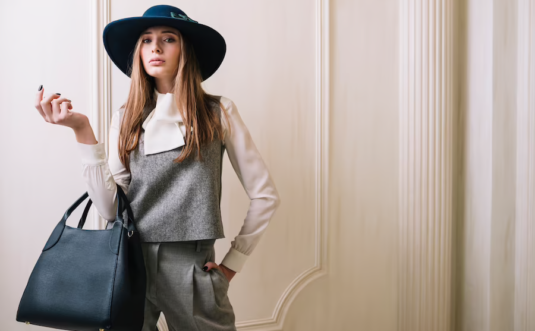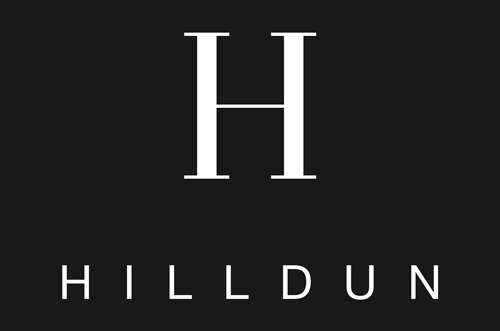A mesmerizing tapestry of sartorial prowess, your fashion design portfolio unveils a kaleidoscope of untamed brilliance, entwined with strands of innovation, craftsmanship, and the audacity to redefine fashion’s boundaries. It morphs into a vivid embodiment of your virtuosity, an eloquent symphony composed with threads and fabric. As a veritable magnum opus, this compendium wields the power to captivate, bewitch, and ensnare the minds of prospective clients, discerning employers, and kindred collaborators alike. Its pages, a portal into your creative cosmos, beckon with the promise of limitless possibilities in the realm of style.
Crafted with meticulous care and vision, a meticulously curated opus of opulence, your portfolio epitomizes your idiosyncratic panache, for it is not merely a banal collection of sketches, but an intricately woven narrative of your artistic expedition. Each stroke of the brush, each deliberate cut of the shears, an eloquent testament to your technical virtuosity and an enigmatic testament to your unrestrained imagination. It exists not to conform, but to liberate, not to blend in, but to stand out resplendently amidst a sea of mediocrity.
The opulent tapestry of your oeuvre demands a stage, a visual tapestry that unveils your majestic creations in a symphony of opalescent hues and captivating textures. The arrangement is not a haphazard assembly, but a meticulously choreographed ballet, where each ensemble sings its own melodious tale, entwined with others in a mesmerizing dance of diversity. From the avant-garde to the timeless classics, your portfolio embraces the spectrum of fashion, casting its spell upon those who dare to behold its magnificence.
Crafting a Compelling Fashion Design Portfolio
Defining Your Brand Identity
Before diving into the creation of your portfolio, it’s essential to define your brand identity. Consider the type of fashion design you specialize in, your target audience, and the unique elements that set you apart. Are you known for your avant-garde designs, sustainable fashion initiatives, or intricate textile work? Defining your brand identity will guide the content and overall aesthetic of your portfolio.
Selecting the Right Pieces
Aim for quality over quantity when choosing pieces for your fashion design portfolio. Select a diverse range of your best work that showcases your versatility, technical skills, and creativity. Include sketches, illustrations, photographs, fabric swatches, and finished garments. Remember to prioritize pieces that align with your brand identity and appeal to your target audience.
Organizing Your Portfolio
Structure and organization are key to creating an engaging portfolio. Consider organizing your work thematically, chronologically, or by specific projects. Use headings and subheadings to guide the viewer through your portfolio and provide context for each piece. Aim for a visually pleasing layout that allows your work to shine while maintaining a logical flow.
Remember to write an ALT text that briefly describes the content of the image. This will improve accessibility and search engine optimization (SEO) for your portfolio.
Highlighting Technical Skills
Aside from showcasing your finished designs, it’s important to demonstrate your technical skills. Include detailed descriptions, close-up shots of intricate stitching or embellishments, and any innovative techniques you’ve employed. This will impress potential clients or employers and showcase your expertise beyond aesthetics.
Incorporating Client Testimonials
Client testimonials provide social proof and validate your skills as a fashion designer. If you’ve received positive feedback or collaborated with notable clients, include their testimonials in your portfolio. Highlight specific projects or experiences that demonstrate your ability to meet client expectations and deliver exceptional results.
Including Relevant Industry Experience
If you have relevant industry experience, such as internships, fashion shows, or collaborations, make sure to include them in your portfolio. This demonstrates your dedication to the field and your ability to work effectively within a professional environment. Describe your role in each project and the skills you acquired during the process.
Emphasizing Your Unique Selling Points
What sets you apart from other fashion designers? Identify your unique selling points and highlight them in your portfolio. Whether it’s your sustainable practices, innovative use of materials, or exceptional attention to detail, emphasize these qualities to make a memorable impression on viewers.
Essential Elements of a Fashion Design Portfolio
When creating your fashion design portfolio, consider including the following key elements:
- Cover Page: Start your portfolio with an eye-catching cover page that reflects your personal brand and sets the tone for your work;
- Table of Contents: Include a table of contents to help viewers navigate through your portfolio easily and locate specific projects or sections;
- Introduction and Artist Statement: Provide a brief introduction that captures the essence of your design philosophy and includes an artist statement that communicates your vision and inspirations;
- Sketches and Illustrations: Showcase your initial design concepts, sketches, and illustrations that demonstrate your ability to translate ideas into visual representations;
- Fabric and Material Swatches: Include samples of different fabrics, materials, and textures you have utilized in your designs. This allows viewers to appreciate your attention to detail and material selection;
- Technical Drawings and CAD Renderings: Present technical drawings and computer-aided design (CAD) renderings to showcase your ability to communicate design details and specifications accurately;
- Completed Garments or Collections: Highlight your finished garments or collections, including high-quality photographs or fashion show images that capture the essence of your designs;
- Collaborations and Professional Projects: If you’ve collaborated with other designers, brands, or industry professionals, include documentation and photographs from these projects to showcase your teamwork and adaptability;
- Press Features and Publications: If your work has been featured in magazines, fashion blogs, or other publications, compile a section that highlights these achievements;
- Industry Awards and Recognitions: Include any awards, scholarships, or honors you’ve received within the fashion industry. This adds credibility to your portfolio and demonstrates your talent and accomplishments.

Showcasing Technical Skills in Your Portfolio
To emphasize your technical skills and expertise, consider including the following elements in your fashion design portfolio:
- Construction Details: Provide close-up shots or detailed descriptions of the construction techniques you’ve employed in your designs. This could include hand-sewn details, tailored finishes, or complex pattern-making;
- Pattern and Prototype Development: Showcase the progression of your designs from initial patterns to prototypes, highlighting your understanding of garment construction and fit;
- Fabric Manipulation and Embellishments: Display examples of innovative fabric manipulation techniques you’ve used, such as pleating, draping, embroidery, or beading. This demonstrates your ability to transform materials and create unique textures;
- Technical Drawings: Include technical drawings that illustrate the construction and assembly of garments, showcasing your attention to detail and ability to communicate design specifications;
- Digital Design Skills: If you’re proficient in fashion design software like Adobe Illustrator or Photoshop, include digital renderings or CAD drawings to highlight your technical proficiency in these tools;
- Innovative Techniques and Material Experimentation: If you’ve explored unconventional materials or techniques in your designs, document and explain these experiments. This demonstrates your willingness to push boundaries and think outside the box.
Tailoring Your Portfolio for Different Audiences
Depending on your target audience, you may need to tailor your fashion design portfolio to suit their specific interests and requirements. Consider the following tips:
- Fashion Industry Professionals: When presenting your portfolio to industry professionals such as fashion designers, creative directors, or buyers, focus on showcasing your technical skills, attention to detail, and ability to meet industry standards. Highlight collaborations and projects that align with their brand aesthetic or target market;
- Clients and Customers: If you’re targeting individual clients or potential customers, emphasize the creative and aesthetic aspects of your work. Showcase designs that reflect current fashion trends, highlight versatility, and include testimonials from satisfied clients to build trust;
- Educational Institutions: When applying to fashion design programs or academic positions, emphasize your educational background, relevant coursework, and academic achievements. Include projects that demonstrate your ability to research, conceptualize, and execute fashion designs;
- Job Seekers: If you’re using your portfolio to secure employment, tailor it to the specific job requirements and showcase projects that align with the company’s brand and design ethos. Highlight relevant work experience, internships, and collaborations that demonstrate your industry knowledge and teamwork skills.
Online Portfolio Platforms and Tools
To create a compelling online fashion design portfolio, consider utilizing the following popular platforms and tools:
- Behance: Behance is a widely used platform that allows you to create a visually appealing portfolio with various customization options. It provides a community of creatives and potential exposure for your work;
- Adobe Portfolio: If you’re already using Adobe Creative Cloud, Adobe Portfolio offers a seamless integration with their design tools. It provides customizable templates and hosting options to showcase your fashion design portfolio;
- Squarespace: Squarespace is a user-friendly website builder that offers beautiful templates and drag-and-drop functionality. It’s a great option for creating a professional-looking fashion design portfolio with e-commerce capabilities;
- Wix: Wix is another popular website builder that offers customizable templates and a user-friendly interface. It provides a range of features to showcase your fashion design portfolio, including image galleries, contact forms, and integration with social media platforms.

Tips for an Engaging Fashion Design Portfolio
To create an engaging fashion design portfolio that captivates viewers, consider the following tips:
Tell a Story: Organize your portfolio in a way that tells a coherent and compelling story. Start with an attention-grabbing introduction, take viewers through your design process, and end with a memorable conclusion. This narrative approach keeps viewers engaged and helps them understand your creative journey.
Consider Layout and Design: Pay attention to the overall layout and design of your portfolio. Use a consistent color scheme, typography, and visual elements that align with your brand identity. Ensure that your portfolio is visually appealing, well-structured, and easy to navigate.
Include Behind-the-Scenes Content: Offer a glimpse into your creative process by including behind-the-scenes content. This could include sketches, mood boards, fabric swatches, or photographs of your work in progress. These insights give viewers a deeper understanding of your design approach and add an element of authenticity.
Add Interactive Elements: Consider incorporating interactive elements into your digital portfolio. This could include interactive slideshows, clickable links to additional information, or embedded videos showcasing your designs in motion. Interactive elements make your portfolio more dynamic and engaging for viewers.
Balancing Creativity and Commercial Appeal
In fashion design, finding the balance between artistic creativity and commercial appeal is essential. Consider the following strategies to showcase this balance in your portfolio:
- Include Range: Demonstrate your ability to create designs that appeal to different audiences and markets. Showcase a range of styles, from avant-garde pieces to ready-to-wear collections. This shows your versatility and understanding of diverse customer preferences;
- Focus on Wearability: While artistic expression is important, emphasize the wearability and practicality of your designs. Highlight how your creations seamlessly merge style and functionality, making them attractive to both fashion-forward individuals and everyday consumers;
- Provide Market Research: Include a section in your portfolio that showcases your market research skills. This could involve analyzing current fashion trends, consumer demands, and industry forecasts. Demonstrating your awareness of market trends and your ability to design with commercial viability in mind is a valuable asset;
- Highlight Collaborations: Collaborations with fashion brands or retailers demonstrate your ability to work within specific commercial constraints. Showcase projects where you successfully collaborated with brands to create designs that aligned with their target audience and brand image.
The Power of Presentation: Creating Impactful Visuals
Creating impactful visuals is crucial to grabbing the attention of viewers and leaving a lasting impression. Consider the following tips to enhance the visual appeal of your fashion design portfolio:
Invest in Professional Photography: High-quality photographs are essential for showcasing your designs effectively. Hire a professional photographer or collaborate with a skilled fashion photographer to capture your work in the best light possible. Make sure to showcase different angles, details, and variations of each design.
Pay Attention to Composition: Ensure that your photographs are well-composed, with attention to framing, lighting, and balance. Use negative space effectively to draw focus to the garments and maintain visual harmony throughout your portfolio.
Experiment with Layouts: Break away from traditional grid layouts and experiment with unconventional and dynamic arrangements. Play with overlapping images, asymmetrical compositions, and varying image sizes to create visual interest and add a sense of movement to your portfolio.
Consider Contextualization: Present your designs in contextual settings to showcase their real-life impact. Use images of models wearing your garments in relevant locations or create visual narratives that evoke the mood and theme of your designs. This helps viewers envision your creations in a real-world context.

Keeping Your Portfolio Updated
Regularly updating your fashion design portfolio is crucial to staying relevant and showcasing your growth as a designer. Consider the following strategies to keep your portfolio fresh and up to date:
Document New Projects: Continuously document and photograph your new projects, even if they are personal or small-scale. This ensures you have a pool of recent work to choose from when updating your portfolio.
Reflect on Feedback: Pay attention to feedback and critiques you receive on your designs. Use them as opportunities to improve and refine your work. Consider incorporating changes based on feedback into your portfolio, demonstrating your ability to adapt and learn from experiences.
Keep Up with Trends: Stay informed about current fashion trends, emerging techniques, and industry developments. Incorporate these trends into your portfolio to showcase your ability to stay on top of the ever-evolving fashion landscape.
Delete and Replace: As you add new work to your portfolio, assess older pieces and remove any that no longer align with your current style or level of expertise. Replace them with more recent and impactful designs that better represent your current skill level.
Conclusion
Crafting a captivating portfolio is essential for fashion designers to showcase their talent, creativity, and expertise. By defining your brand identity, carefully selecting your best work, organizing your portfolio, utilizing visual media, highlighting technical skills, incorporating client testimonials, including industry experience, and emphasizing your unique selling points, you can create a compelling portfolio that leaves a lasting impression on potential clients and employers.




